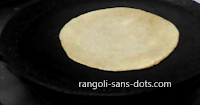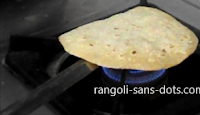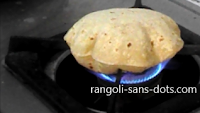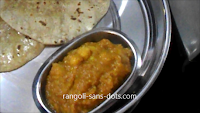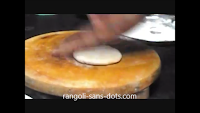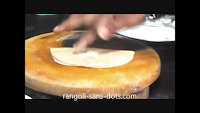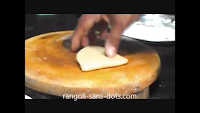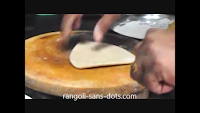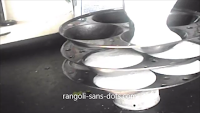Cooking tips and tricks for beginners
How to make a round phulka roti or chapati | How to make phulka puff
This will happen because we usually apply more pressure on our right hand if we are right handers. So the rolling pin while moving backward and forward will pull the dough or turn the dough towards the right also. When both happen simultaneously - rolling the pin back and forth and rotating the dough towards the right we will get an almost round or circular shape chapati. This explanation is given to show how it happens. While we do we should try to do these things consciously , if we practice it will come effortlessly and with ease.
When the dough gets cooked , flip it to the other side
After one or two flips , remove the pan from the stove
Heat the roti directly on the flame
The roti becomes fluffy , soft
Serve with side dish. If needed apply ghee or oil after cooking .
How to make a triangular chapati or roti
Using a rolling pin , get a circular shape , this is done by applying more pressure on the right which is usually imperceptible , the result the dough rotates clockwise. The rotation of the dough and the to and fro motion of the rolling pin result in getting a circular shape. ( Physics - from my children . The detailed explanation has already been given above). Due to the effect of both the dough spreads radially in all directions , resulting in the circular shape.
Now fold the rolled dough as shown in the image below
One more fold ensures that a small triangle like shape is obtained
Roll along the three sides to get a triangular chapati. Occasionally sprinkle wheat flour on the dough to ensure that is does not stick to the rolling pin or stone. Using the rolling pin , roll on the three sides stretching the dough to get the desired shape .
Triangular chapati is ready to be cooked
Pouring idli batter in idli plate or idli cooker
The batter is poured from one edge of the hollow space to the other edge. This will ensure that we get the perfect shape for an idli. If we pour at the centre the shape may result in layer formation.
Idli batter preparation - proportion
There are many methods of preparing batter for idli. What I follow is - for four measures of rice , one measure of urad dhal and one teaspoon fenugreekin urad dhal . Rice and urad dhal - fenugreek combination are soaked separately for two hours . They are wet ground separately and then mixed and allowed to ferment overnight. In the morning we can see that the batter overflows from the vessel!
